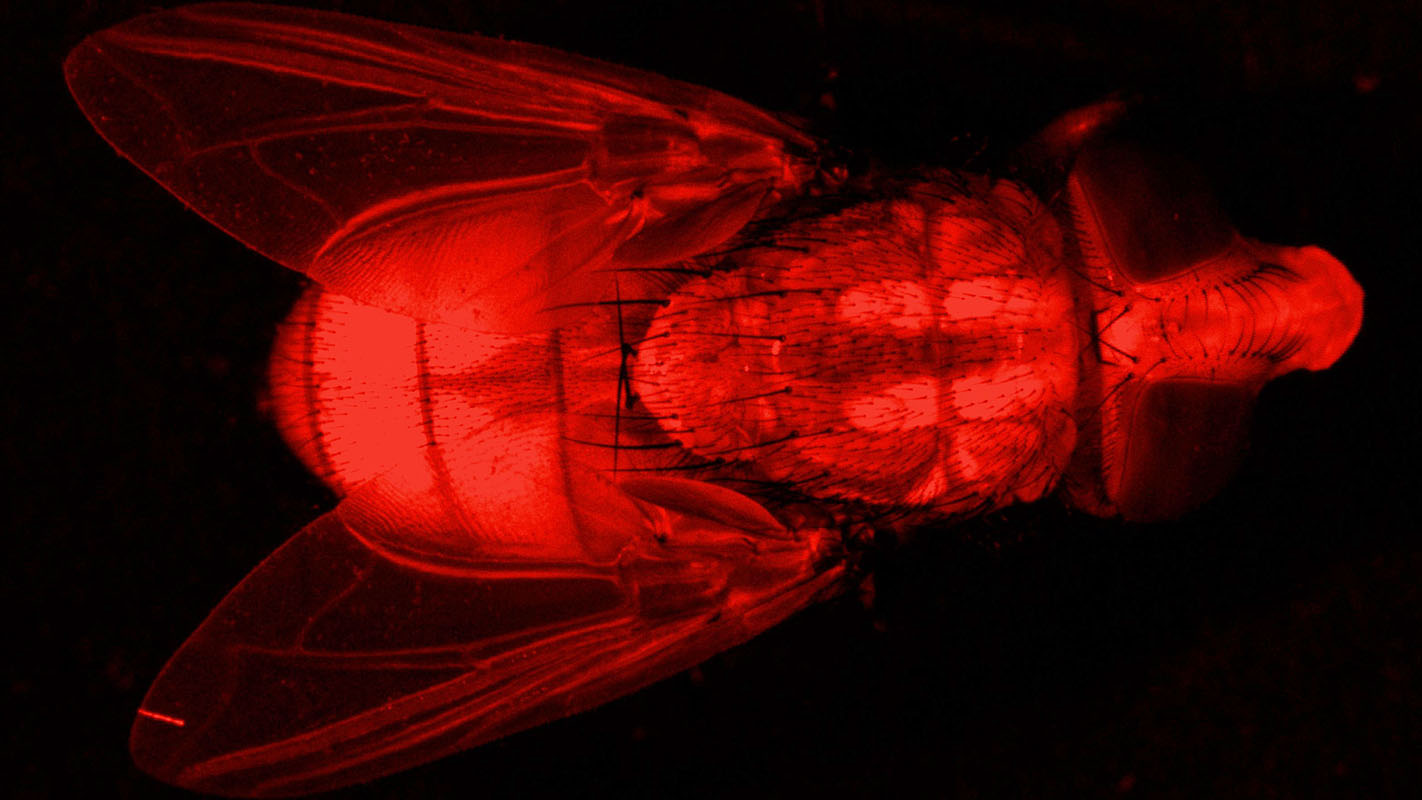It’s a Boy: Modified Male Flies Could More Efficiently Control Screwworm Population

For Immediate Release
Populations of New World screwworm flies – devastating parasitic livestock pests in Western Hemisphere tropical regions – could be greatly suppressed with the introduction of male flies that produce only males when they mate, according to new research from North Carolina State University, the USDA’s Agricultural Research Service, the Panama-United States Commission for the Eradication and Prevention of Screwworm (COPEG) and the Smithsonian Tropical Research Institute.
Withholding tetracycline in the larval diet essentially means “It’s a boy” when the genetically modified male flies successfully mate with females in the field, says Max Scott, an NC State entomologist who is the corresponding author of a paper describing the research.
“Genetic suppression of a pest population is more efficient if only males survive, so we manipulated screwworm genes to promote a female-lethal system that works when a common antibiotic is not provided at larval stages,” Scott said. “If we feed the larvae the antibiotic both male and female survive and are as fit as the wild type strain.”
The study shows that the genetically modified males both compete well for the attention of fertile females and mate successfully with fertile females. The genetically modified flies also do not mate with other very closely related fly species.
New World screwworm flies (Cochliomyia hominivorax) parasitize warm-blooded animals in the Western Hemisphere tropics and sub-tropics, causing massive financial and animal losses. The flies were eradicated from North and Central America years ago using the sterile insect technique, which has resulted in annual savings of more than $1 billion per year. However, the flies continue to wreak havoc across South America and some Caribbean islands.
Scott says that a sterile insect technique has been used to keep the South American flies at bay. This technique involves irradiating both male and female flies to make them sterile and then releasing them – in an area between the Panama Canal and Colombia – to mate with fertile flies in order to prevent screwworm re-introduction to Central and North America.
“This is a bit inefficient, as sterile males will mate with sterile females, which is totally unnecessary,” Scott says. “Releasing only males, would cut down on the costs of rearing sterile female flies and should significantly increase the efficiency of the suppression program. Plus, it would take fewer resources to begin screwworm eradication program in other afflicted areas, like the west coast of South America, for example.” In addition, the technology should be easily transferable to other flies that are pests of livestock such as the Old World screwworm.
Scott added that COPEG will now evaluate one of the genetically modified screwworm fly lines. That commission has worked to prevent the reintroduction of the pest into North and Central America and is responsible for the current sterile insect technique program. All of the genetically modified strains were developed within the COPEG biosecure facility in Panama, which will facilitate incorporation of the strains into the ongoing operational program.
The study was published online in the journal BMC Biology. Funding was provided by USDA’s Agricultural Research Service and its National Institute of Food and Agriculture BRAG program, COPEG and NC State.
– kulikowski –
Note to editors: An abstract of the paper follows.
“A transgenic male-only strain of the New World screwworm for an improved control program using the sterile insect technique”
Authors: Carolina Concha, Fang Li, Jason Osborne and Max Scott, North Carolina State University; Azhahianambi Palavesam, Felix D. Guerrero, USDA-ARS Tick and Biting Fly Research Unit; Agustin Sagel, Trinidad Pardo, Gladys Quintero, Mario Vasquez, Pamela L. Phillips and Steven R. Skoda, USDA-ARS Screwworm Research Unit; Yillian Hernandez, Panama-United States Commission for the Eradication and Prevention of Screwworm; Gwen P. Keller, USDA-APHIS-IS; John B. Welch, USDA-APHIS-IS Action Programs; W. Owen McMillan, Smithsonian Tropical Research Institute
Published: Online Aug. 30, 2016 in BMC Biology
DOI: 10.1186/s12915-016-0296-8
Abstract:
Background: The New World Screwworm, Cochliomyia hominivorax, is a devastating pest of livestock endemic to sub-tropical and tropical regions of the Western Hemisphere. The larvae of this species feed on the tissue of living animals, including man, and can cause death if untreated. Over 60 years ago, the sterile insect technique (SIT) was developed with the aim of eradicating this pest, initially from Florida but subsequently from all of North and Central America. From the outset it was appreciated that SIT would be more efficient if only sterile males were released in the field, but this was not possible until now.
Results: Here, we report the development and evaluation of the first sexing strains of C. hominivorax that produce only males when raised on diet without tetracycline. Transgenic lines have been developed that possess a tetracycline repressible female-lethal genetic system. Ten of these lines show high female lethality at the late larval/pupal stages and three of them present dominant female lethality. Most of the lines were comparable to the wild type parental strain in several fitness parameters that are relevant to mass rearing in a production facility. Further, three lines performed well in male mating success and male competition assays, suggesting they would be sexually competitive in the field. Consequently, one transgenic line has been selected by the New World Screwworm Program for evaluation under mass rearing conditions.
Conclusions: We conclude that the promising characteristics of the selected sexing strains may contribute to reduce production costs for the existing eradication program and provide more efficient population suppression, which should make a genetic control program more economical in regions were C. hominivorax remains endemic.
- Categories:


